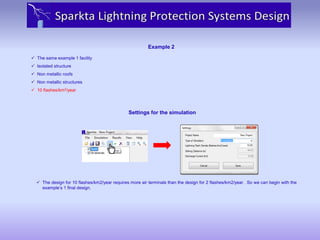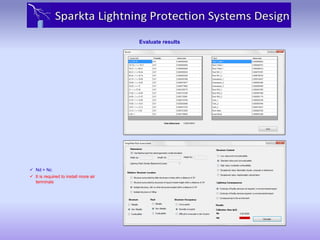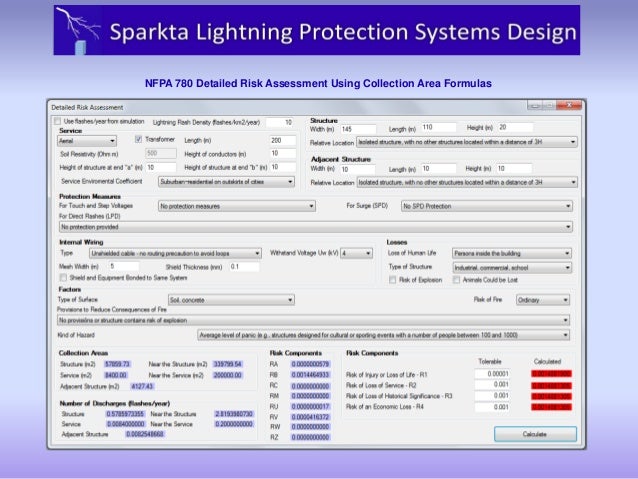NFPA 780 Risk Assessment: Ensuring Safety from Lightnings
Lightning strikes can be very damaging, not only for buildings, but also for human life. In order to ensure safety and protection from lightning, it is important to conduct a proper risk assessment. One way to do this is through the guidelines set forth by the NFPA 780 Standard for the Installation of Lightning Protection Systems. This standard provides a comprehensive approach for evaluating, designing, installing, and maintaining lightning protection systems.
Anyone who is looking to protect their building from lightning strikes should consider the benefits of conducting a NFPA 780 risk assessment. This can help identify potential vulnerabilities in the building and its surroundings, and provide guidance on how to mitigate those risks. Common pain points that can be resolved through a risk assessment include damage to electrical systems, fires, structural damage, and even injury or death to occupants.
The main target of NFPA 780 risk assessment is to evaluate the risk of a direct lightning strike on a structure, and to evaluate the risk of damage from lightning surges on the structure's electrical and electronic systems. The standard employs a variety of methods, including simplified and detailed approaches, to evaluate these risks and to design lightning protection systems that will mitigate them.
In summary, conducting a NFPA 780 risk assessment is a crucial step in protecting a building from potential lightning strikes. The standard provides a comprehensive approach that considers all aspects of the building and its surroundings, and provides guidance on how to mitigate risks. By following these guidelines, building owners can ensure the safety of occupants, protect against property damage, and ensure that their building remains operational even after a lightning strike.
NFPA 780 Risk Assessment: A Personal Experience
As a building owner, I once experienced damage caused by lightning strikes that damaged my building's electrical systems. It was then that I realized the importance of conducting a proper risk assessment, and I turned to the NFPA 780 standard for guidance. After taking the necessary steps, including hiring a qualified contractor to install a lightning protection system, I now feel much more secure knowing that my building is protected against potential lightning strikes.
In addition to identifying potential vulnerabilities and providing guidance on how to mitigate risks, the NFPA 780 standard also addresses the need for proper grounding. This is crucial in order to divert electrical charges from the lightning strike into the earth, preventing damage to the building and its occupants.
Designing a Lightning Protection System
When designing a lightning protection system, there are a few key considerations that should be kept in mind. These include the height and geometry of the building, the type of materials used in construction, and the surrounding environment. In general, a lightning protection system should include air terminals that extend above the roofline, down conductors that are grounded to the earth, and bonding connections that ensure continuity throughout the system.
Grounding and Bonding
One key aspect of designing a lightning protection system is proper grounding and bonding. These are critical in order to ensure that electrical charges from the lightning strike are diverted safely through conductors and into the earth. This can help prevent damage to the building and its occupants, and ensure that the lightning protection system operates effectively.
Surge Protection
In addition to providing protection against direct lightning strikes, a lightning protection system should also include surge protection devices. These can help protect against surges caused by lightning strikes on nearby power lines or communication systems, and can help prevent damage to electrical and electronic systems within the building.
Question and Answer
Q: How often should a NFPA 780 risk assessment be conducted?
A: It is recommended that a risk assessment be conducted at least once every five years, or sooner if there have been any significant changes to the building or its surroundings.
Q: What should be included in a risk assessment report?
A: A risk assessment report should include a detailed evaluation of the building and its surroundings, including any potential vulnerabilities and recommendations for mitigating those risks.
Q: Who should be involved in conducting a risk assessment?
A: It is recommended that a qualified lightning protection professional be involved in conducting a risk assessment. This may include a licensed electrician, a structural engineer, or a lightning protection system designer.
Q: What is the cost of a lightning protection system?
A: The cost of a lightning protection system can vary widely depending on the size and complexity of the building, as well as the type of materials used. However, in general, the cost of a lightning protection system is small compared to the potential cost of damage caused by lightning strikes.
Conclusion of NFPA 780 Risk Assessment
In conclusion, a NFPA 780 risk assessment is a crucial step in protecting a building from potential lightning strikes. By evaluating the risks and vulnerabilities associated with a building and its surroundings, and by following the guidelines set forth by the NFPA 780 standard, building owners can ensure the safety of occupants and protect against damage from lightning strikes. With proper design, installation, and maintenance, a lightning protection system can provide peace of mind and ensure the long-term viability of a building.
Gallery
NFPA 780 Simplified Risk Assessment - [PDF Document]
![NFPA 780 simplified risk assessment - [PDF Document]](https://static.fdocuments.in/img/1200x630/reader011/image/20181230/55651862d8b42a08498b46f0.png)
Photo Credit by: bing.com /
NFPA 780 Simplified Risk Assessment

Photo Credit by: bing.com /
NFPA 780 Simplified Risk Assessment

Photo Credit by: bing.com /
NFPA 780 Lightning Risk Assessment, IEEE 80 Grounding Grid Design

Photo Credit by: bing.com /
NFPA 780 Detailed Risk Assessment

Photo Credit by: bing.com / nfpa